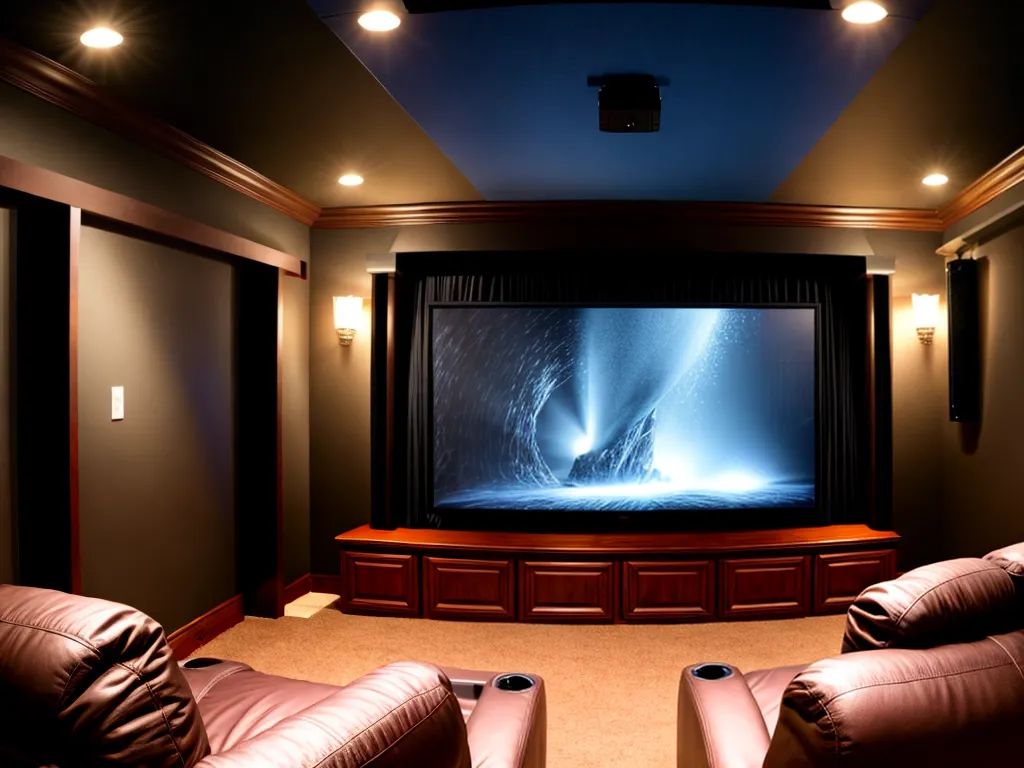
Installing wiring for your home theater can seem daunting, especially if you're trying to save money. However, with some planning and DIY effort, you can wire your home theater on a budget. Here's how to do it right without breaking the bank.
Research Electrical Requirements
The first step is understanding the electrical requirements for your home theater equipment.
-
Televisions - Modern flat screen TVs only need a standard 120V electrical outlet. However, larger televisions may require more power. Check the manual to see if your TV has any special power needs.
-
Speakers - Speakers often only require basic power from a 120V outlet. However, larger surround sound systems may need more power depending on the number of speakers and wattage.
-
A/V Receiver - These units require a 120V outlet. Higher end receivers may need more power.
-
Gaming Consoles - Game systems like Xbox and Playstation only need a standard 120V outlet.
-
Blu-ray/DVD Player - These components just need a basic 120V electrical outlet.
Once you've determined the number of outlets needed for your gear, you can start planning your wiring approach.
Choose Appropriate Speaker Wire Gauge
Speaker wire carries audio signals from your A/V receiver to each speaker. The right wire gauge prevents signal loss over long distances.
For most home theater applications, 16 or 14 gauge wire works well. 12 gauge may be needed for very long wire runs. I recommend oxygen-free copper speaker wire for best conductivity.
When running wires inside walls, use CL2 or CL3 rated wiring, which is in-wall rated for safety.
Make sure to get enough wire length to connect your furthest speakers. Also include some extra slack.
Pick In-Wall or Surface-Mount Wiring
You can either run wiring through your walls, or use surface-mounted raceways to hold the wires externally:
-
In-wall wiring - This provides the cleanest look by hiding the wires in the wall cavity. However, it requires drilling holes and fishing wires through walls and ceiling.
-
Surface-mount raceway - Plastic channels mount onto the wall surface to hold wires externally. This avoids in-wall work but wires will be visible.
For a budget home theater install, surface mounting wire channels is often the simpler DIY solution.
Plan Outlet and Speaker Placement
Map out where you want to place your outlets, speakers and other equipment.
-
Put outlets in furniture openings or at baseboard level for easiest access.
-
Place speakers appropriately for optimal surround sound.
-
Mark locations with painter's tape to visualize the layout.
Also consider how you'll route the wiring between outlet and speaker locations.
Purchase Supplies From Home Improvement Store
You can purchase most of the wiring supplies you'll need at any home improvement store.
For outlets and in-wall wiring, buy:
-
Electrical boxes - Plastic or metal boxes mount inside the wall cavity.
-
Voltage outlets - Standard 120V outlets or other specs if needed.
-
NM-B wire - Romex wire for running in-wall power.
-
Low voltage plates - Wall plates that accommodate HDMI and other cables.
-
Cable conduits - Plastic conduits to protect cables going through walls.
For surface wiring, get:
-
Raceways - Plastic channels for surface mounting wires.
-
Wire covers - Adhesive covers to hide surface-mounted cables.
Shop discount or clearance sections for budget savings.
Run Power Wiring and Install Outlets
With your supplies gathered, it's time to start the wiring.
If running power wiring inside walls, either hire an electrician or take great care if DIYing. Ensure the breaker is OFF!
Follow basic electrical wiring steps:
- Turn power OFF at the breaker.
- Cut open drywall at outlet locations.
- Drill holes through studs and top plate.
- Run NM-B wire from breaker to outlet boxes.
- Secure wires safely in boxes.
- Attach outlets and wall plates.
Take time to neatly run and secure the wiring. Follow local electrical codes.
If surface mounting, carefully run conduit along baseboards and walls. Attach securely.
Fish Speaker Wires to Outlets
To connect A/V gear, speaker wire must link receivers to each speaker location.
-
Run wires through conduits for in-wall routing.
-
For surface mounting, use raceways. Neatly run wire through openings.
-
Label wire ends clearly so you can match room locations.
-
Leave plenty of extra wire at the endpoints.
Take care not to damage the copper when pulling wire through walls and ceiling.
Connect Equipment to Outlets and Speakers
With the power and speaker wiring run, you can start connecting devices.
- Plug in and place A/V receiver.
- Connect receiver output with labeled speaker wire.
- Plug in and place TV monitor.
- Connect source devices with HDMI cables to receiver.
- Turn on power and test system thoroughly.
Use cable ties and wire clips to neatly bundle and hide wires. Make it look clean!
Pat yourself on the back for wiring your home theater on a budget! Now relax and enjoy your custom A/V experience.
Troubleshooting Tips
If you encounter any problems, here are some troubleshooting tips:
-
No power - Check breaker, outlet connections, and power strips.
-
No audio - Verify input selection and volume on receiver. Check speaker wire connections.
-
No video - Make sure TV and source are on and connected to receiver properly.
-
Buzzing speakers - Use shielded audio cable if speaker wires are picking up interference.
-
Weak signal - For long wire runs, use thicker gauge speaker wire.
With careful planning and elbow grease, you can save substantially by wiring your home theater yourself. Just take it slow and be meticulous. Now enjoy your budget-friendly surround sound!